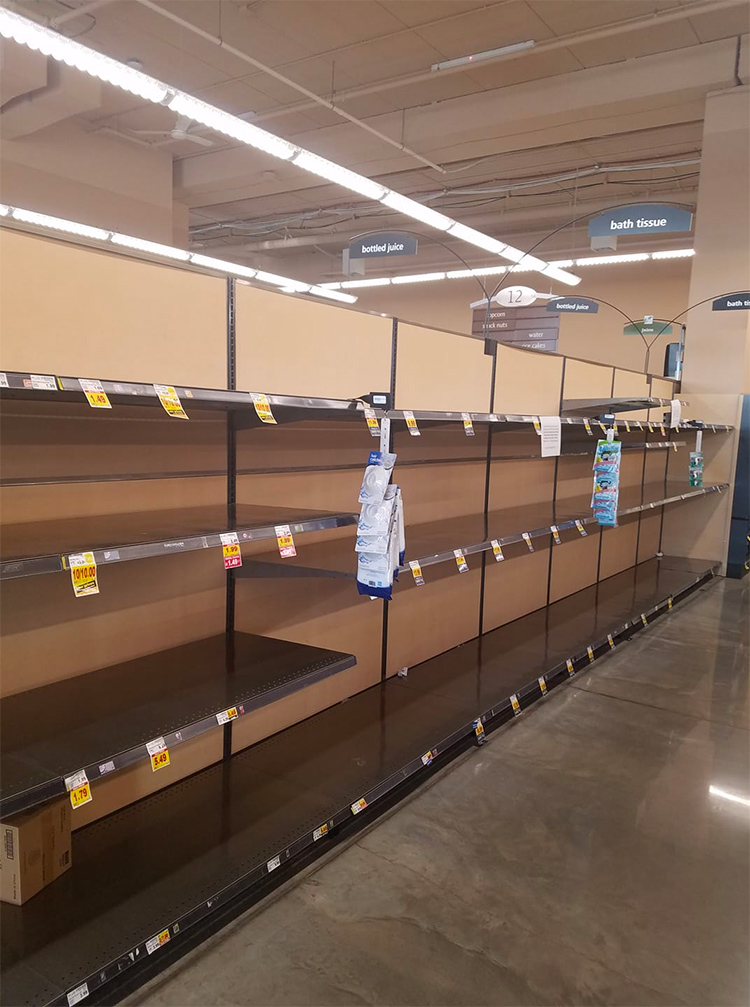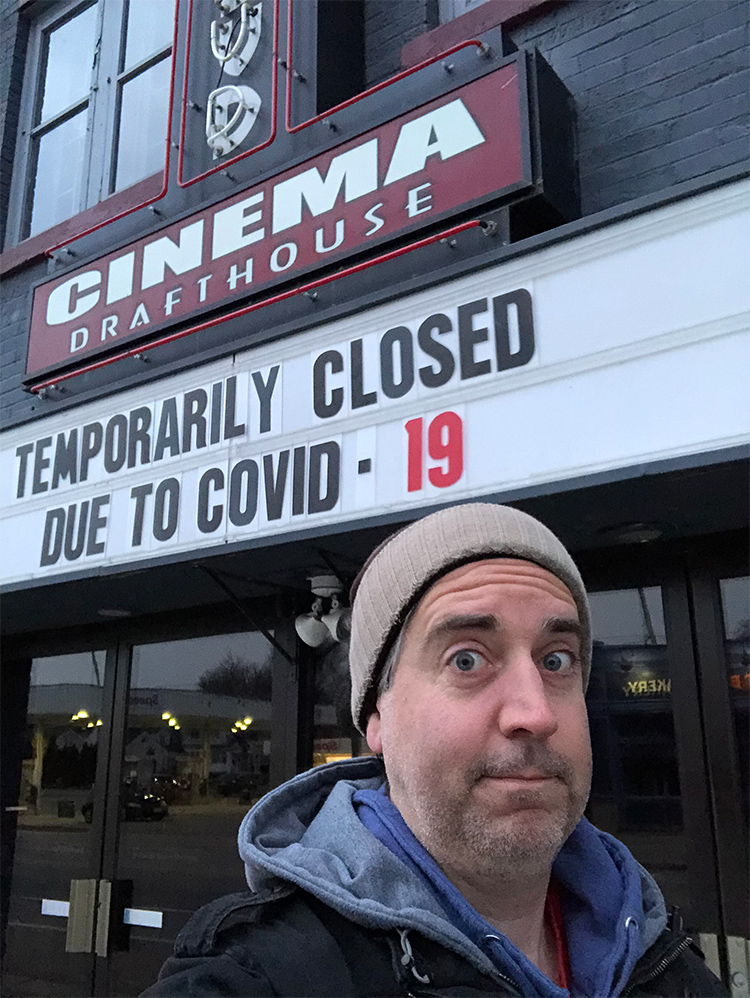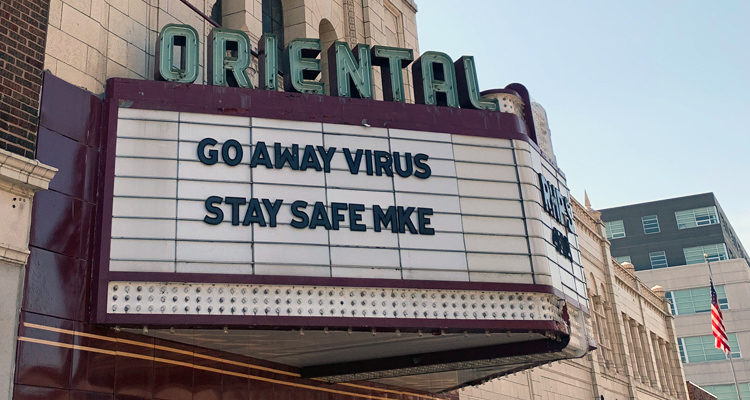News cycles move faster than ever. Tomorrow’s COVID-19 headlines will differ greatly from when this article went live. New data and names of self-quarantined public figures will add to the narrative that grows with every swipe through our social media feeds.
It’s hard enough to keep up as events unfold in real time. How will future generations look back on this unprecedented moment in history?
Luckily, Milwaukee’s got a guy for that. Christopher D. Cantwell is Assistant Professor of Public and Digital History at UWM. Milwaukee Record spoke with Cantwell about the new project he’s curating, COVID-19 MKE: A Milwaukee Coronavirus Digital Archive. We discussed his inspiration for the initiative, “history harvests” of the recent past, and how we all might appreciate gathering together more—even in classrooms—once the pandemic has passed.
Milwaukee Record: How unique is this collective experience we’re having right now? Even something like 9/11 was only 18 years ago, but there was no social media to share stories and information, no easy way to fact-check claims. Is this going to be the first global event that’s digitally documented?
Chris Cantwell: The inspiration for this site really came from two sources. First, the concept of “history harvests” has been around for a while, where historians use the web to document particularly dramatic moments for posterity. The 9/11 Archive actually started this trend almost 20 years ago. But lately historians have worked more locally, documenting things like the Boston Marathon Bombing and the Black Lives Matter movement. When the scale of the pandemic became clear, it seemed worthwhile to try to document how Milwaukee would experience it.
The second impetus behind the project, though, was UWM’s prudent decision to move all classes online. I had been teaching a graduate seminar called “Local History Research Methods” that had students—who were all aspiring archivists and museum professionals—work with churches to document their history. When those started to close, it became clear that this project would not be sustainable. So the first idea fed the second, and now the goal is for my students to collect and curate material from the community.

Photo: Tanya Lovendahl
MR: You’re also keeping this local, which makes it relatively contained and intimate. Would you say Milwaukee’s size and location makes it unique in any way to tell this story? And is the fact that we’re in some ways behind in the spread of COVID-19 that’s an advantage? Like, we know what others have gone through, and we know what to look for?
CC: I think some of those questions will hopefully be answered by the kinds of documents we collect. But I can tell you why I chose to keep it local is because that is where I think the richest and most unique stories will come from. We’re already seeing documentation about the workplace tensions that led to some businesses closing, or the creative ways Milwaukeeans are trying to support their neighborhood bars. Whatever our place in this pandemic ends up being, I want to ensure that there is a living archive of this moment that ensures our collective memory is accurate. There is a similar project out of Arizona State University called A Journal of the Plague Year. But they have ambitions to try and create a global archive.
MR: You have another project that documents Milwaukee’s religious history, Gathering Places. It maps places of worship geographically, and on a timeline, so we can see the spread and growth of certain communities to reach this point. Have you seen certain responses in religious communities around town to COVID-19? I’m thinking specifically about live-streaming services on a mass scale, and how well received that seemed to be. Do you anticipate that worship could be one way things change permanently?
CC: One of the hardest things I’ve had to do so far in this moment was to email the places of worship that had originally agreed to partner with me to tell them I didn’t think the project could work right now. But I’m heartened by the fact that one of the things my students can work on is documenting how religious communities are navigating the crisis. And not just in the ways they are having worship. Churches, mosques, synagogues, and temples are vital social centers that often offer their communities essential services. So yes, my hope is that my students will be able to record this by collecting documents, downloading live-streamed worship services, and conducting oral histories. But we also hope to expand our gaze beyond places of worship, which was why I paused the Gathering Places project. An event of this magnitude requires that we also talk to medical professionals, businesses, city officials, educators, students, artists, social workers, and other Milwaukee communities. My students are eager to do so, and if there is anyone out there who has a story they’d like to share, I’d encourage them to contact me.
MR: And will the COVID-19 digital archive inform further studies down the road for you? Is it a snapshot of a moment, or an evolving platform to see how this could permanently change life around the 414 area code?
CC: The future of the project really depends on the community’s needs. If the site really strikes a nerve and becomes a place where the Milwaukee area really processes and reflects on this moment, I will continue to grow and develop it as long as it’s of use. But if our memories are short and life moves on quickly, then that’s a sign the project is complete and it will be on to the next thing. Perhaps the community’s recovery will be a part of this project. Perhaps that’s a project unto itself. But as custodians of Milwaukee’s memory, we historians have to follow the community’s lead. There’s a saying in the museum community that I take very seriously, and that guides this project. “History should not be about something, but for somebody.” That’s what will determine the future of the COVID-19 MKE project.
MR: Are you teaching remotely? Teachers and professors have had to find a new way to work with almost no precedent or time to prepare. How are you and your colleagues on campus managing?
CC: Oh, yes. All of my colleagues and I are teaching online, as is every educator in the state. And the only thing I’ll say is that regardless of the benefits people say online education has, the nation is about to get a lesson in the importance of face-to-face instruction very soon.

Photo: Robert S. Jones

